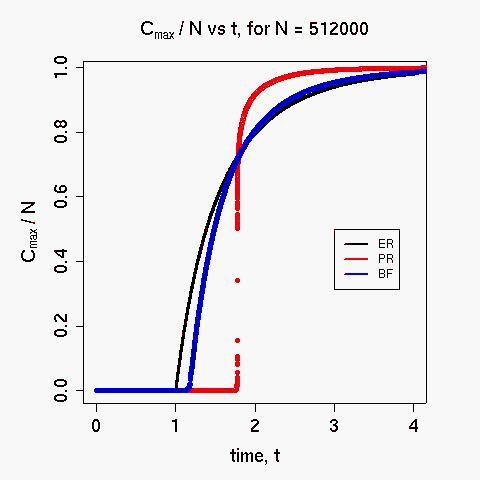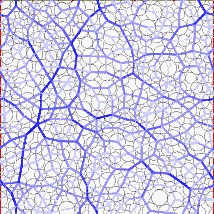 (b)
(b)  (c)
(c) 
In this session we bring together experts from the US and Japan who study flow and jamming and are addressing the outstanding challenges. K. Nishinari, from the University of Tokyo studies self-driven flows, jams, and flocking behavior. Jen Schwarz, from Syracuse University studies dynamical phase transitions, statistical approaches to computational complexity, jamming, biophysics, and Boolean networks. She recently introduced new models which challenge our conventional understanding of the "universal" nature of the jamming phase transition.
Speakers:
Interests: Analysis of algorithms, machine learning, random structures, and applications of theory to systems.
Interests: Cellular Automaton (Traffic and Granular flows, Ants, pedestrian, molecular motors), Soliton theory and its applications, Networked Systems.
Prof. Nishinari's talk: Jammology.ppt
Interests: dynamical phase transitions in systems with disorder, statistical approaches to computational complexity, jamming, biophysics (morphology of the cellular cytoskeleton), and Boolean networks.
Organizers:
Interests: Statistical mechanics, Econophysics, Network dynamics, Biophysics (Recent Publications).
Interests: Phase transitions, self-organization, networked systems, physics of computation.
Session abstract:
Transport is a fundamental underpinning in almost every physical system. We are interested in traffic flow on highways, congestion of packets on the Internet, flow of nutrients through the body, flocking behavior of birds in flight, formation of river networks, etc. These all rely on transportation and flow of physical substances. In almost all scenarios we see a range of self-organized behaviors in the flow, such as formation of vortices or spiral waves (i.e., we see the formation of patterns and order with no external control of guidance). Understanding what gives rise to these patterns requires insights ranging from mathematics and physics, to social science and economics.
Of greater interest is understanding what causes jamming, in other words, what causes the flow to breakdown and stop. Very often we find that jamming happens abruptly. For instance, for a low density of cars on a highway, the flow is smooth and even. Increase the density a tiny bit, and the whole system can come to a complete standstill. Simple models that capture this abrupt phase transition from flow to jamming have been found to describe a wide range of physical scenarios, and thus have a "universal" nature. Extending these models to realistic scenarios of highway traffic, or flow on a network is an outstanding challenge, and an active area of research. Another outstanding challenge is extending these models to describe flow in biological systems.
 (b)
(b)  (c)
(c) 